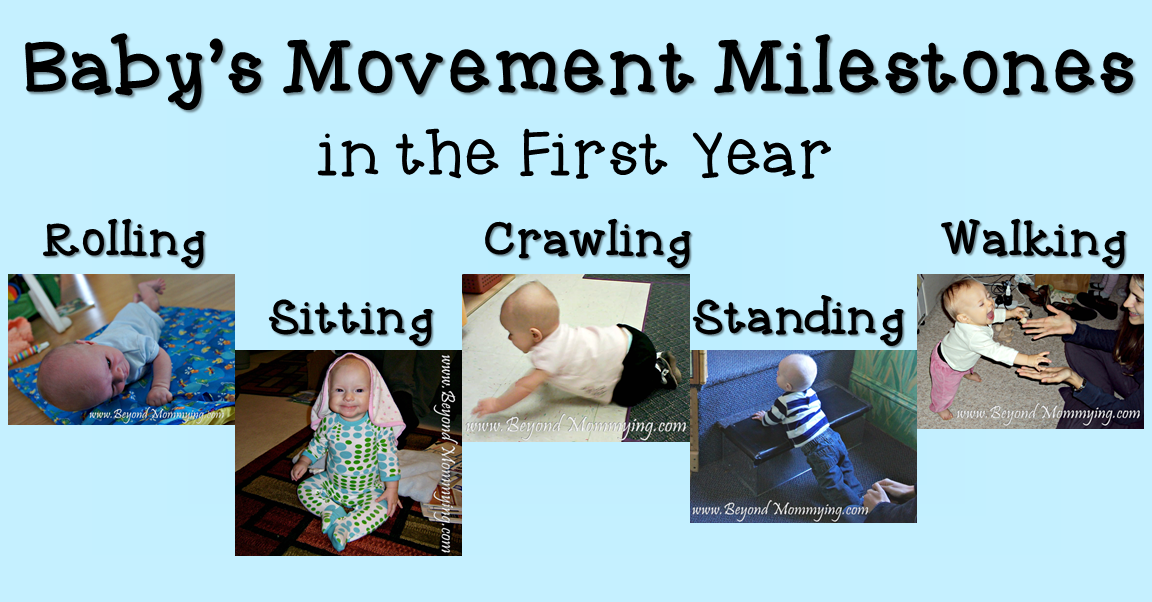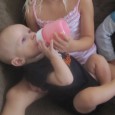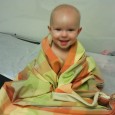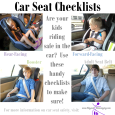While the immobile infant phase, where you can put a baby down and leave them for a minute knowing they’ll be there when you come back, is my favorite I have to admit that the mobile infant phase is one of the most exciting.
Of course, when a baby becomes mobile either by rolling, crawling or scooting in some fashion, the whole parenting game changes. The baby now has a newfound sense of power and free will. They can now dictate their own activities and attempt to get what they want and require constant attention when free to roam.
I remember when Honeybun was a baby (and even Sugarplum and Doodle) well-meaning strangers asking if she was crawling or walking yet and saying things like “keep knocking her down, your life is over once she’s moving!” While I’m sure this advice is well intentioned and comes from personal experience, I’ve always been a big believer in helping my children to achieve their full potential and getting them to the next skill and stage whenever they are ready. I would never hinder their development in any way for my own convenience.
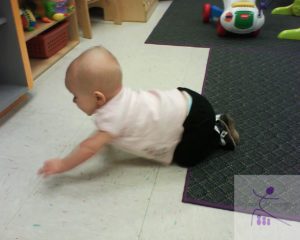 All three of my children crawled between 6 and 8 months (Sugarplum at 6 ½, Honeybun at 7 and Doodle just before 8). None of my kids really used any other form of moving before crawling other than a few days of belly scooting/worming before they figured out proper crawling. It is not uncommon, however, for children to roll to get places before crawling. And in fact, it’s not uncommon for babies to not crawl on their hands and knees at all, instead bum scooting, only rolling or walking on hands and feet.
All three of my children crawled between 6 and 8 months (Sugarplum at 6 ½, Honeybun at 7 and Doodle just before 8). None of my kids really used any other form of moving before crawling other than a few days of belly scooting/worming before they figured out proper crawling. It is not uncommon, however, for children to roll to get places before crawling. And in fact, it’s not uncommon for babies to not crawl on their hands and knees at all, instead bum scooting, only rolling or walking on hands and feet.
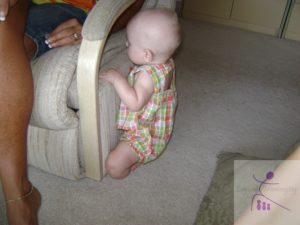 Once a baby is confidently crawling and eagerly exploring their world, most begin using crawling as a means of not only getting where they want to go but also getting over to something they can use to pull up to stand. Some babies will be able to pull themselves to standing before they can crawl if near enough to something supportive but their ability to pull up increases rapidly and they get stronger and quicker.
Once a baby is confidently crawling and eagerly exploring their world, most begin using crawling as a means of not only getting where they want to go but also getting over to something they can use to pull up to stand. Some babies will be able to pull themselves to standing before they can crawl if near enough to something supportive but their ability to pull up increases rapidly and they get stronger and quicker.
As a baby gains confidence in standing they will being cruising around furniture (walking, holding on) and will eventually get brave enough to start letting go and standing then eventually taking a few steps here and there until they are fully walking independently.
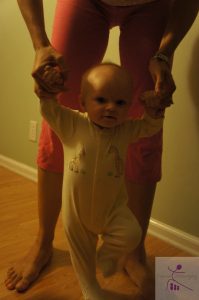
Babies can be helped to gain the strength and confidence for independent walking by holding hands and walking with an adult or by pushing push toys. Baby walkers that have a seat which contains baby seem like a great idea, but in reality they can be very dangerous (especially when used around stairs or without constant supervision) and they don’t actually help a baby learn to walk because to move the walker, a baby must flex forward at the hip and thrust forward with their legs behind them which is not a natural walking position, developing the wrong muscles and coordination.
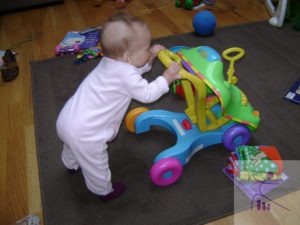
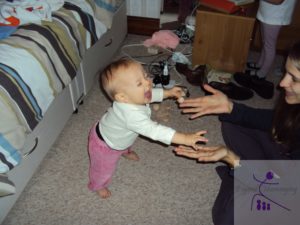
My kids were very varied in when they began walking and how they took to it. Honeybun walked independently at 9 ½ months and once she figured it out, she was forever a walker. Sugarplum started taking steps around 11 months but wasn’t walking confidently until around a year but like Honeybun, once she was walking she pretty much stuck with it. Doodle started stepping after 11 months and by a year was not really walking that much. Now a few weeks later, he is walking more confidently but still alternates between walking and crawling, taking a few steps and when losing his balance and falling, continuing his journey by crawling.
Like all life skills, gross motor development happens at its own rate and each child is different. There are many things that can be done to help a baby on their way to full mobility, but the most important is just to wait, support and let them try and explore. Babies who are left to freely experience their world and abilities on the floor rather than spending a majority of their time in swings, chairs, play yards and exercisers will develop as they should and shouldn’t need a lot of help, assistance or fancy contraptions!


